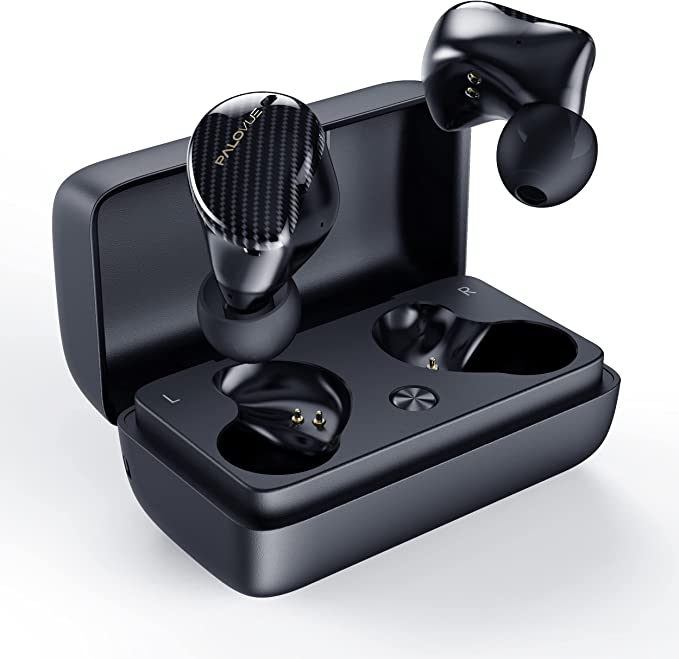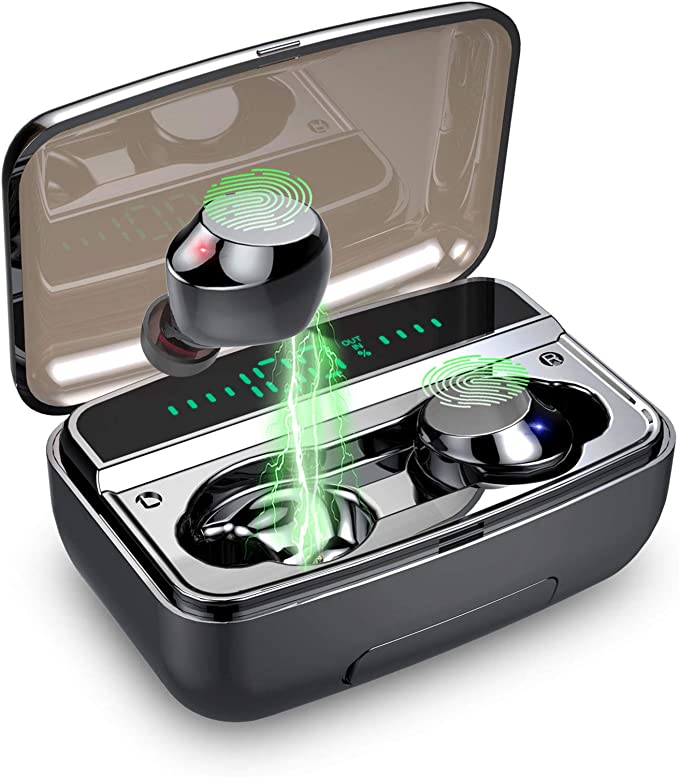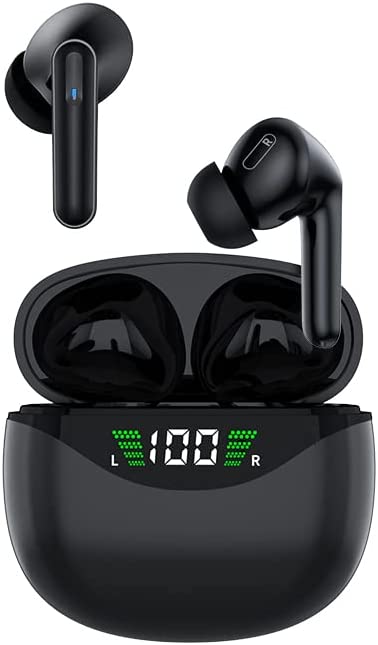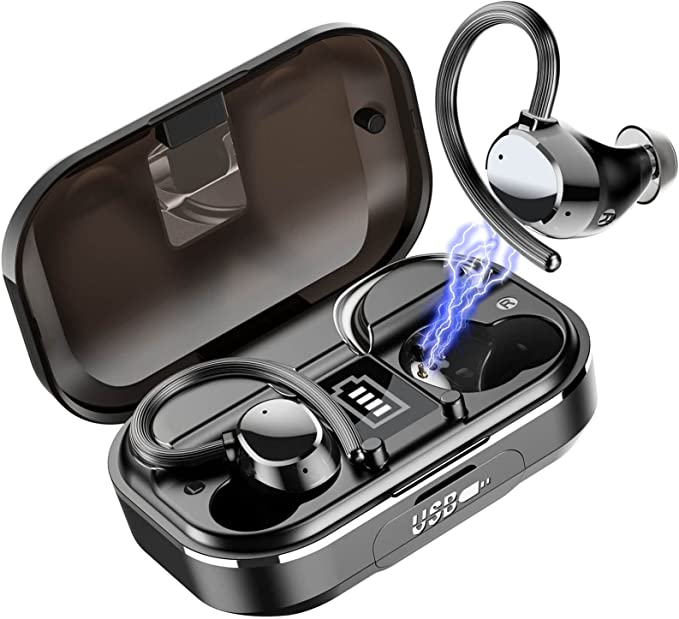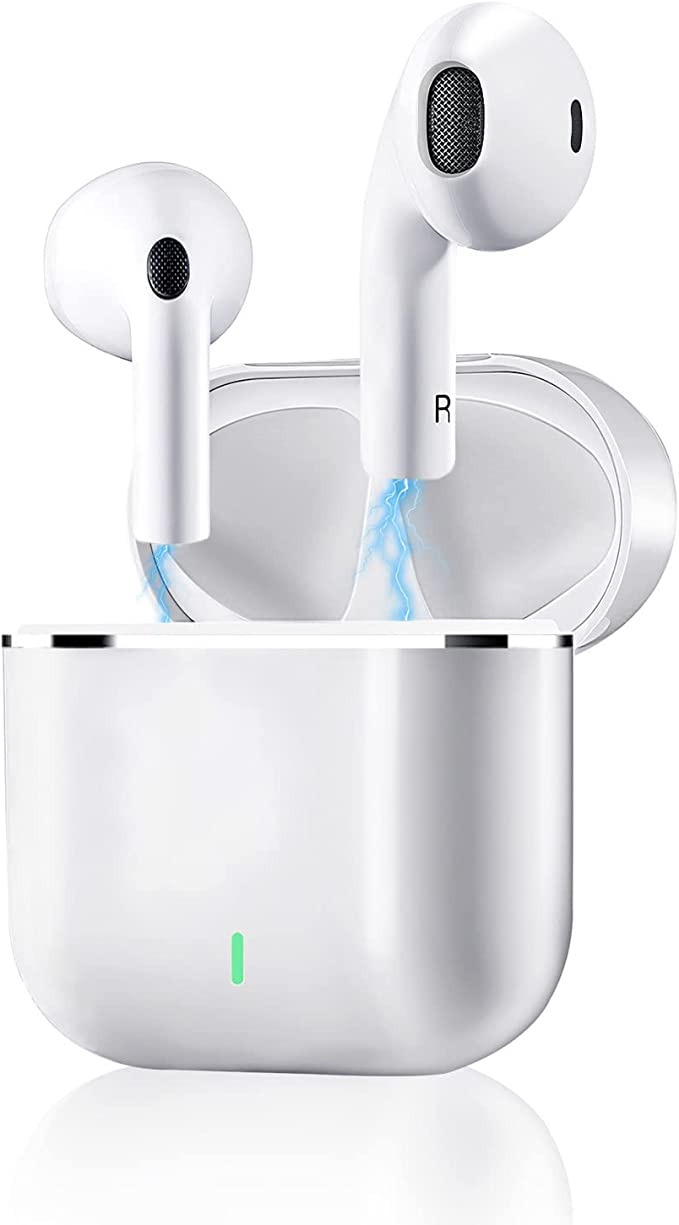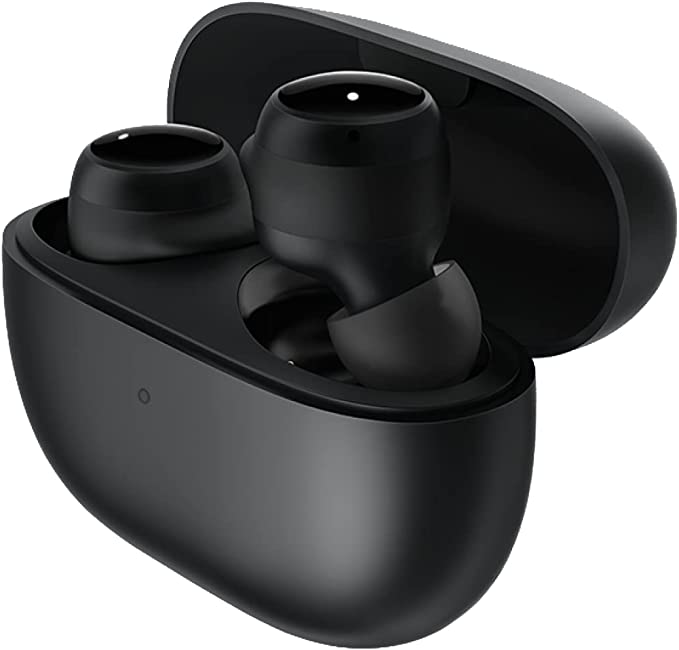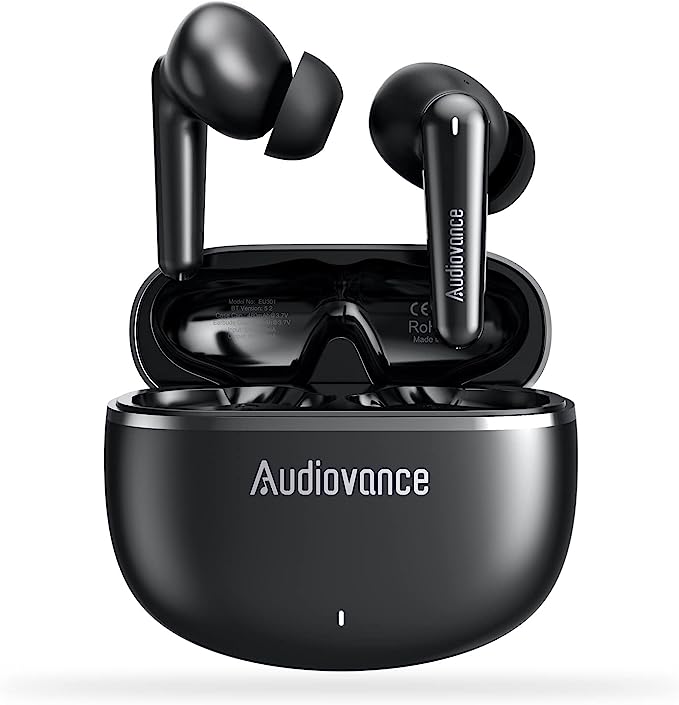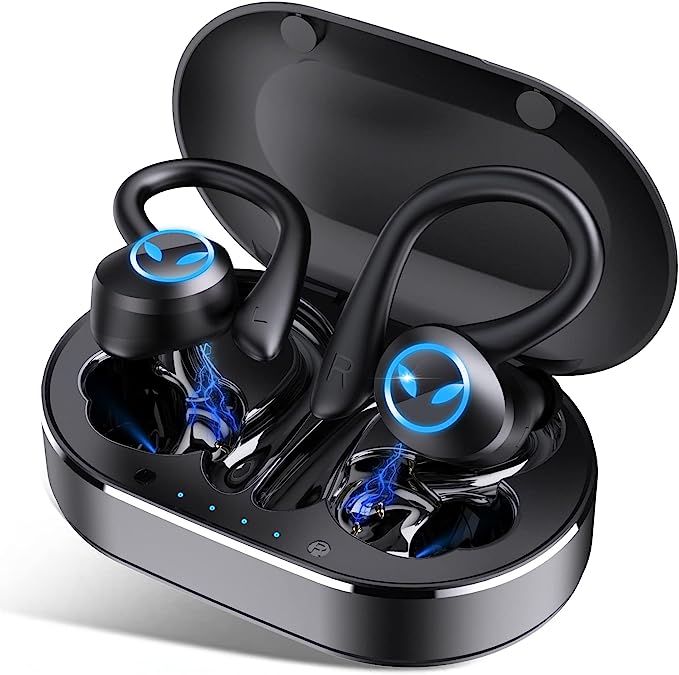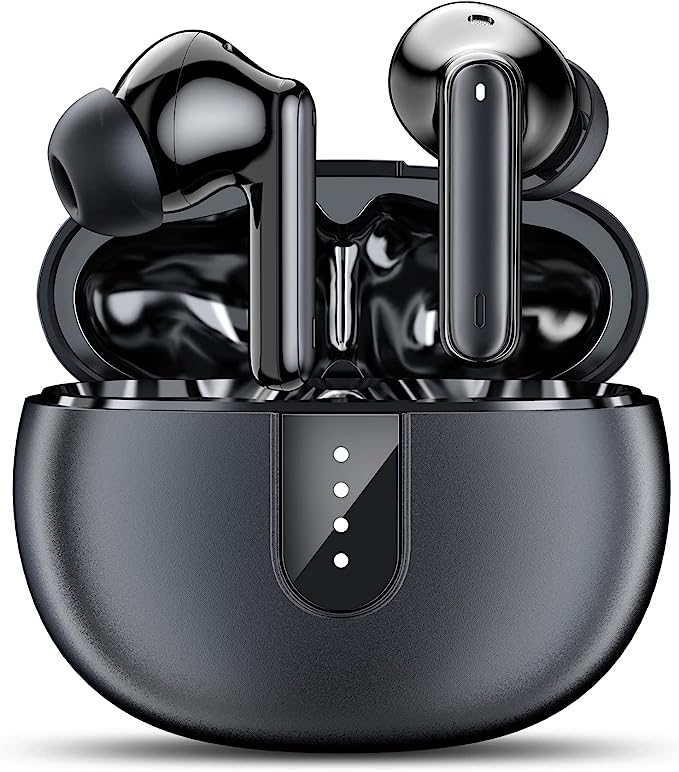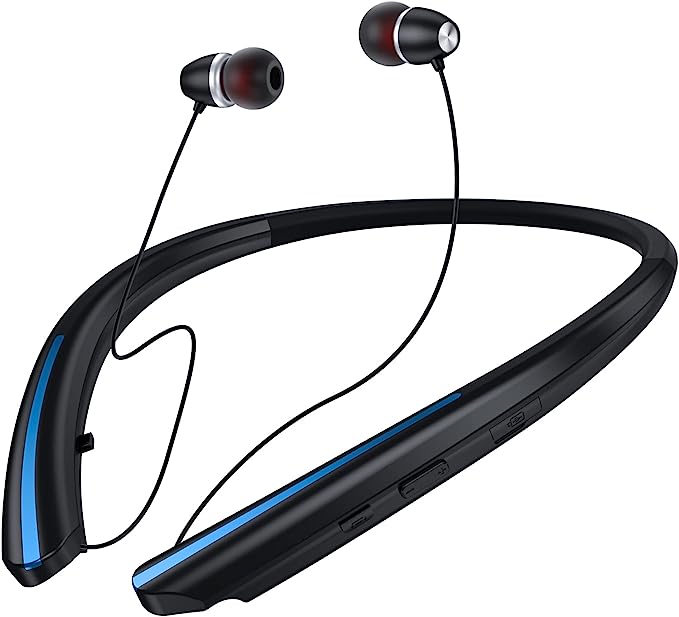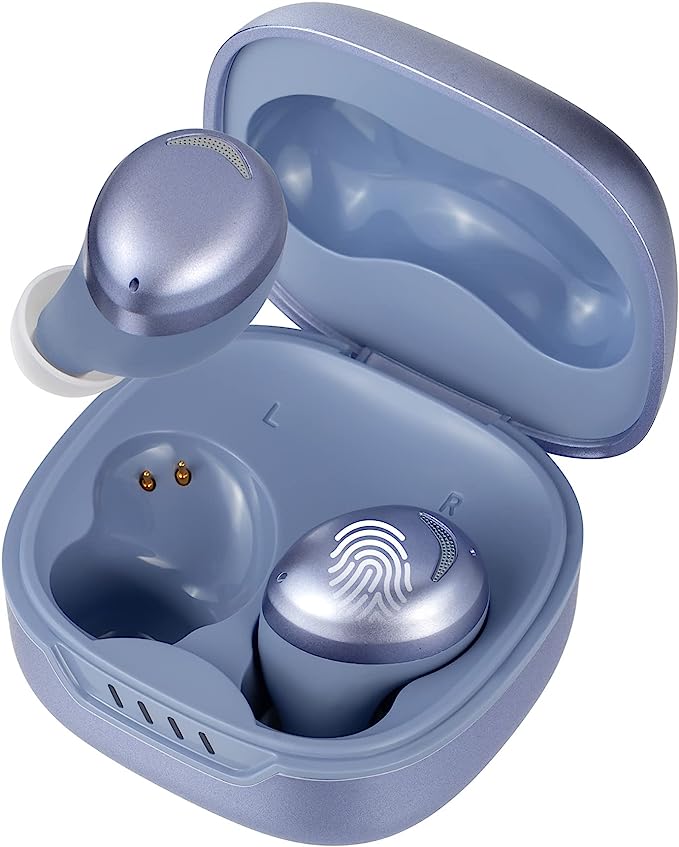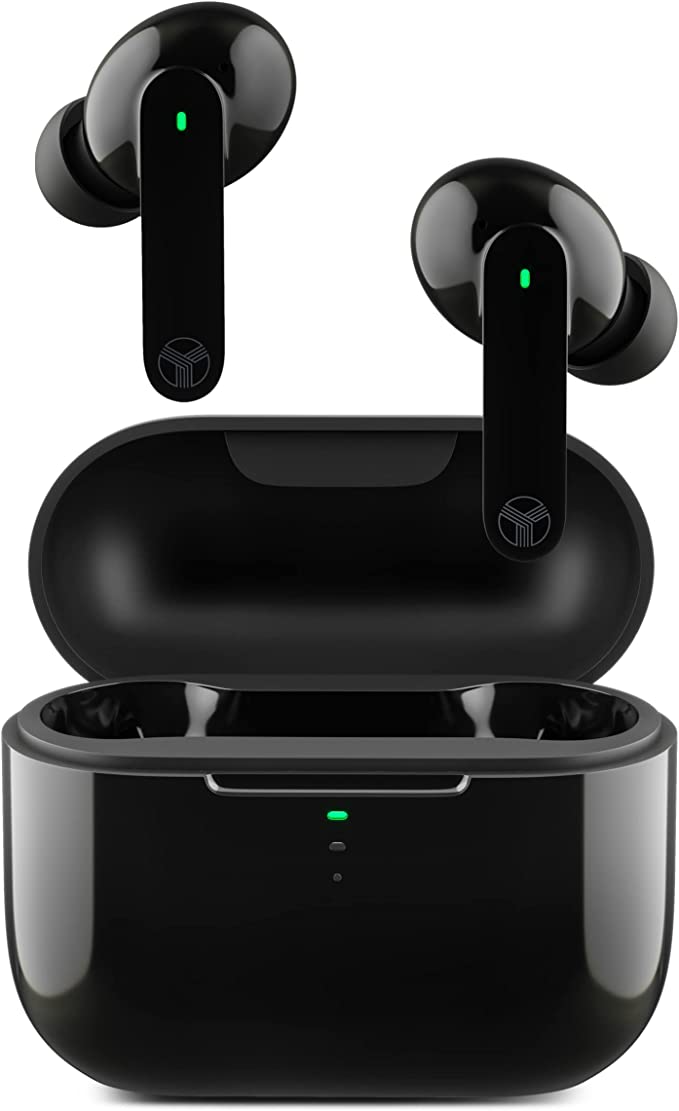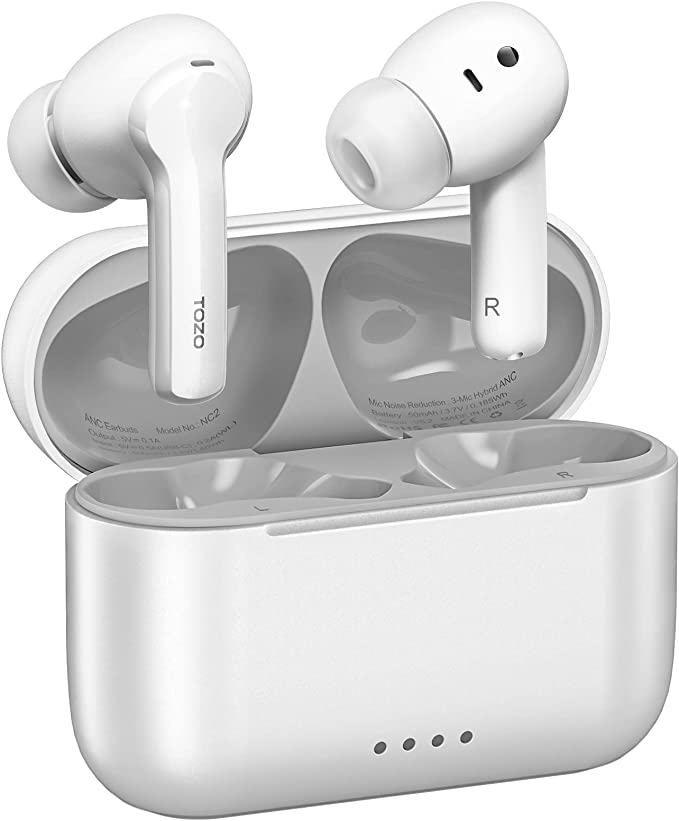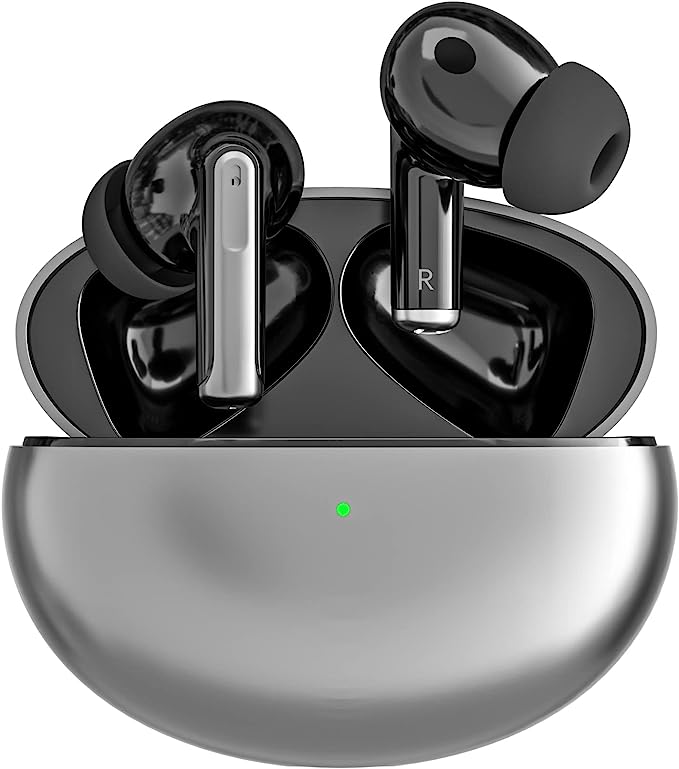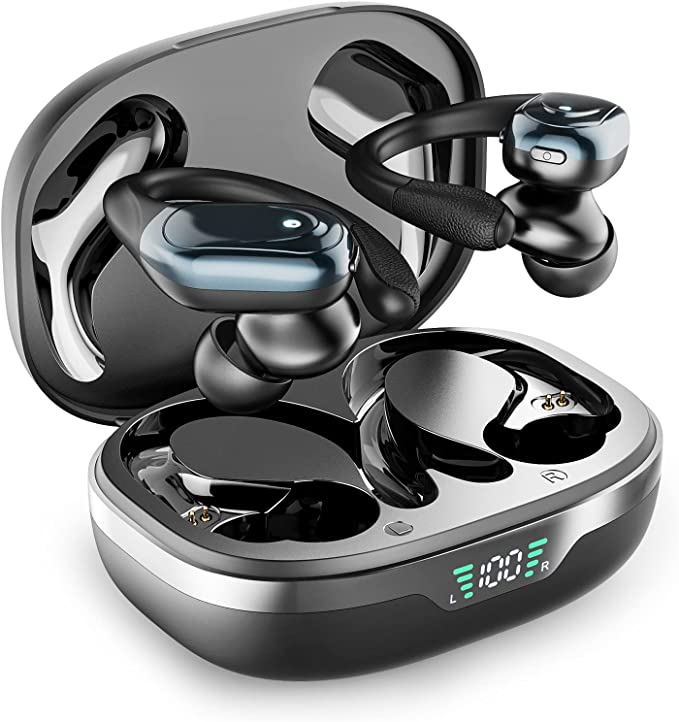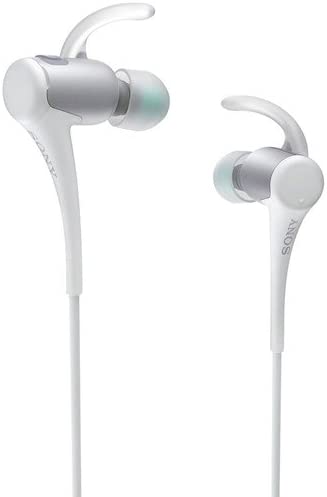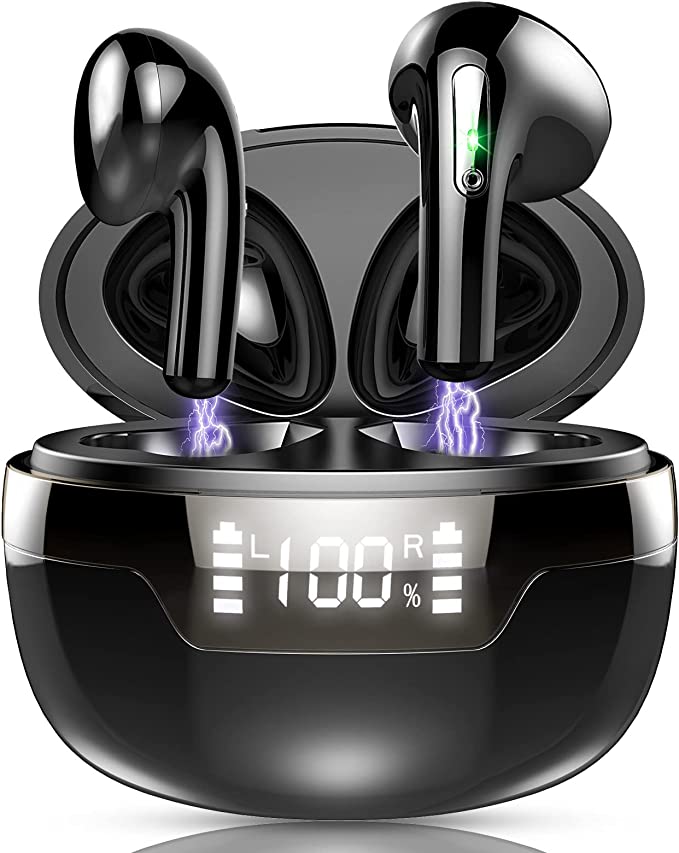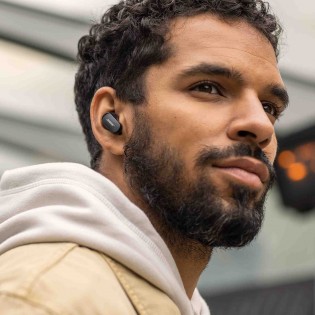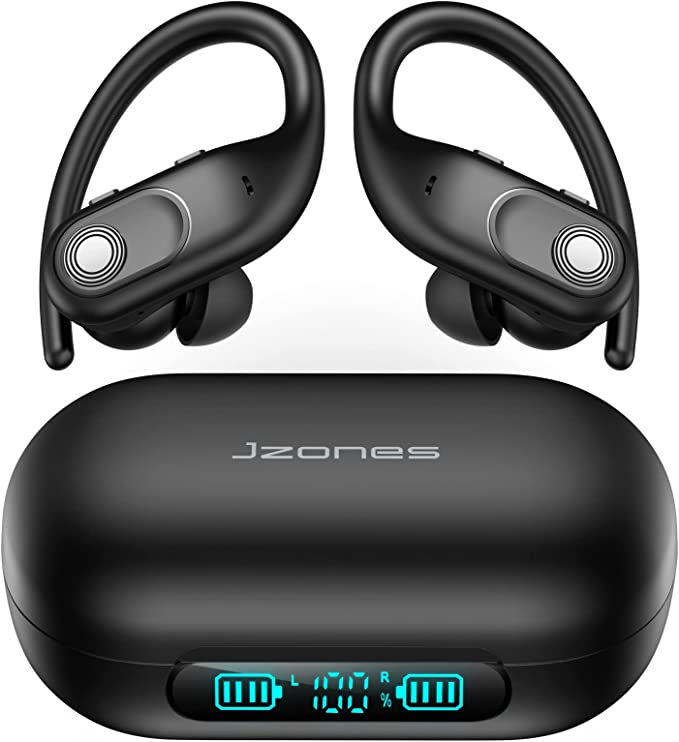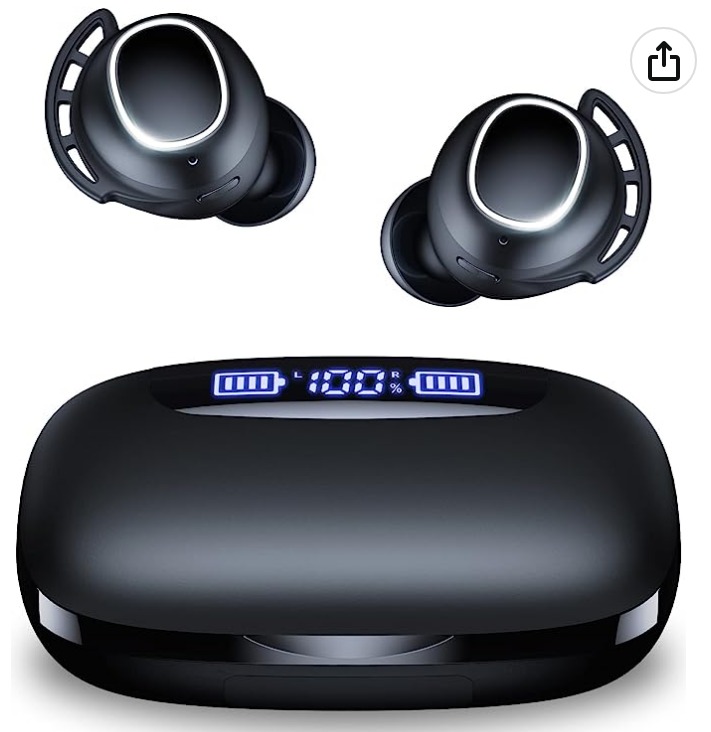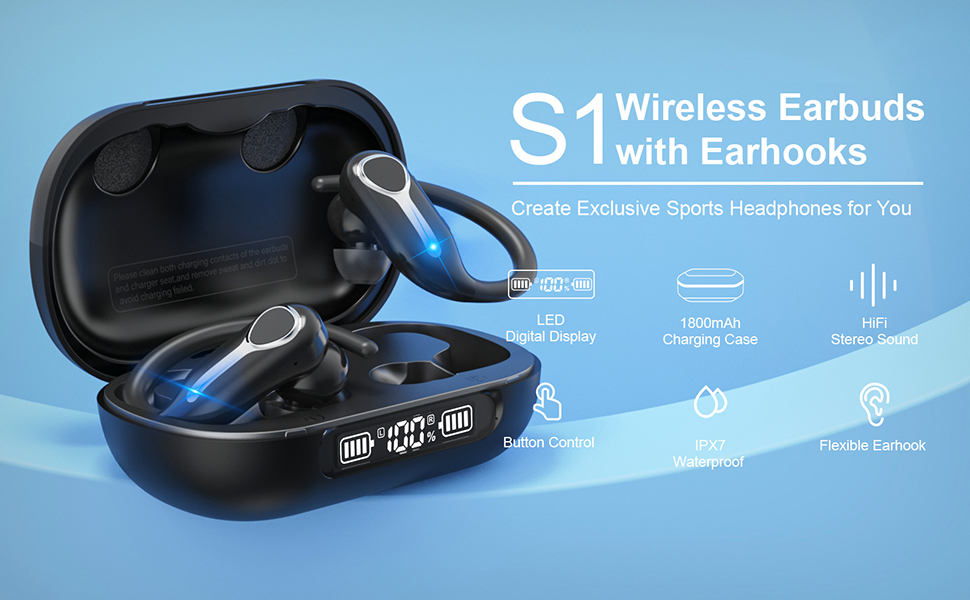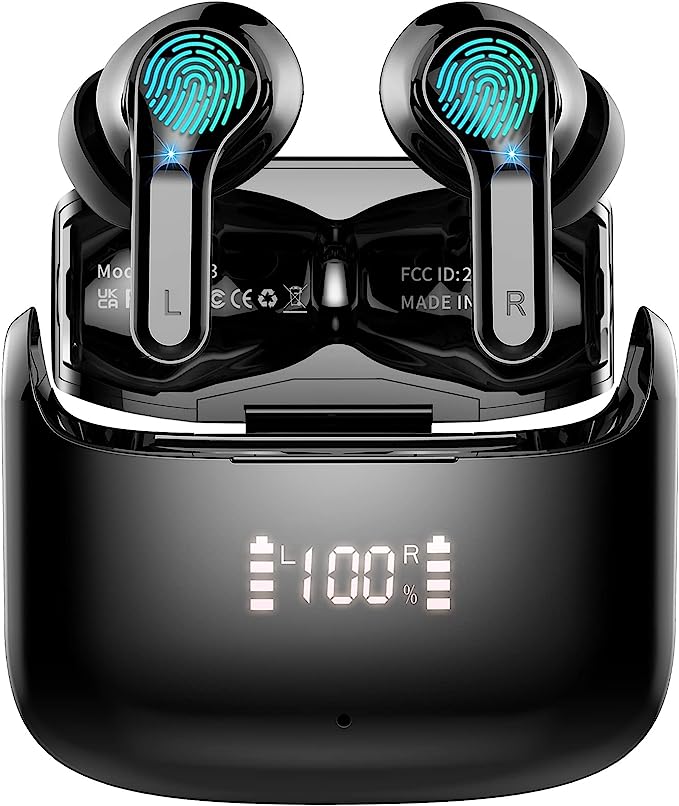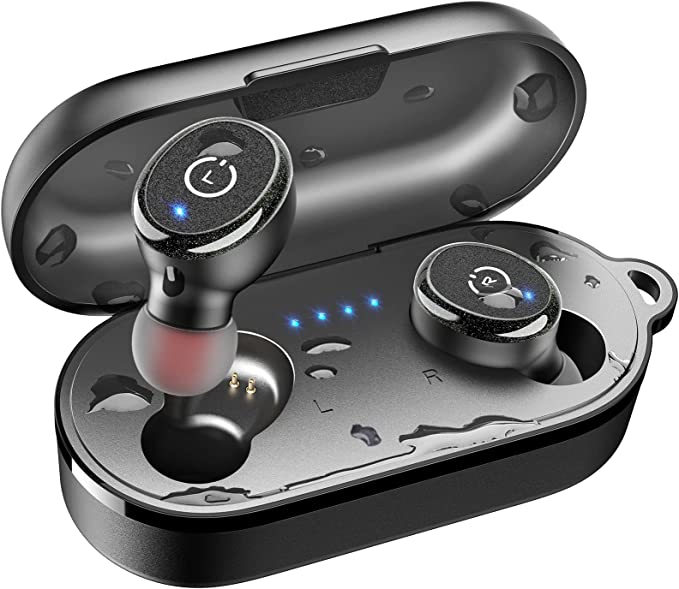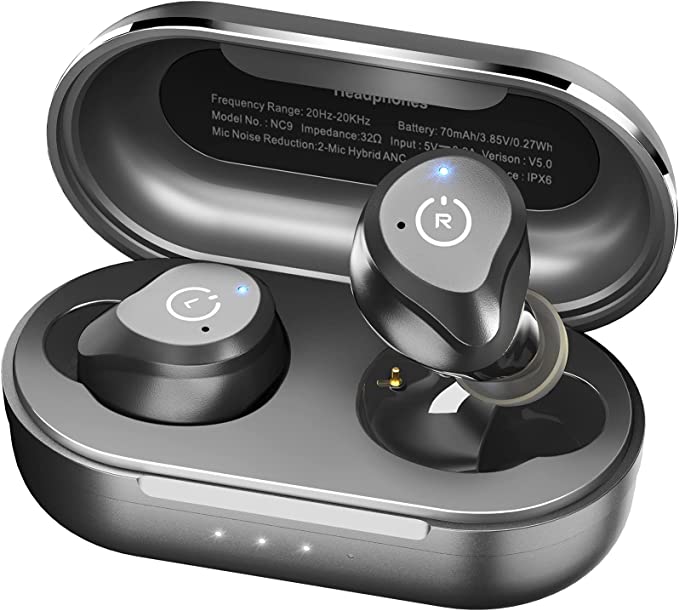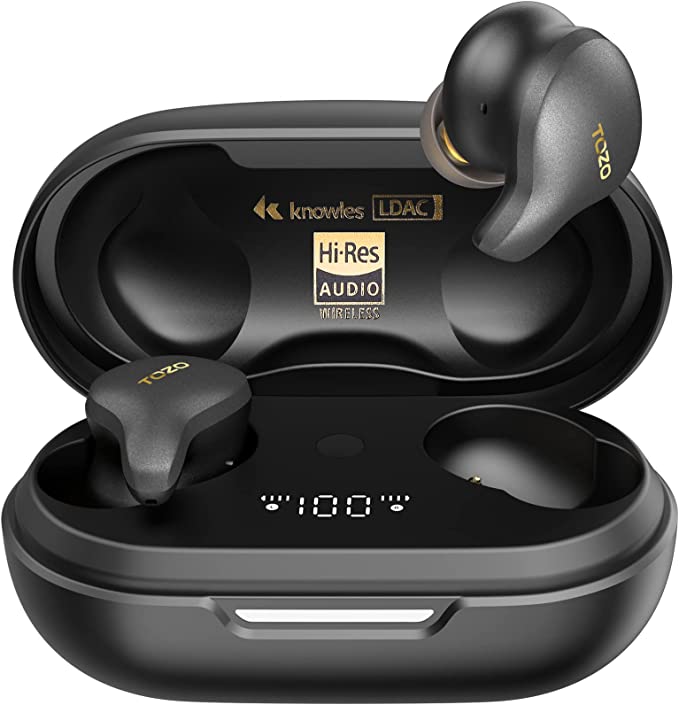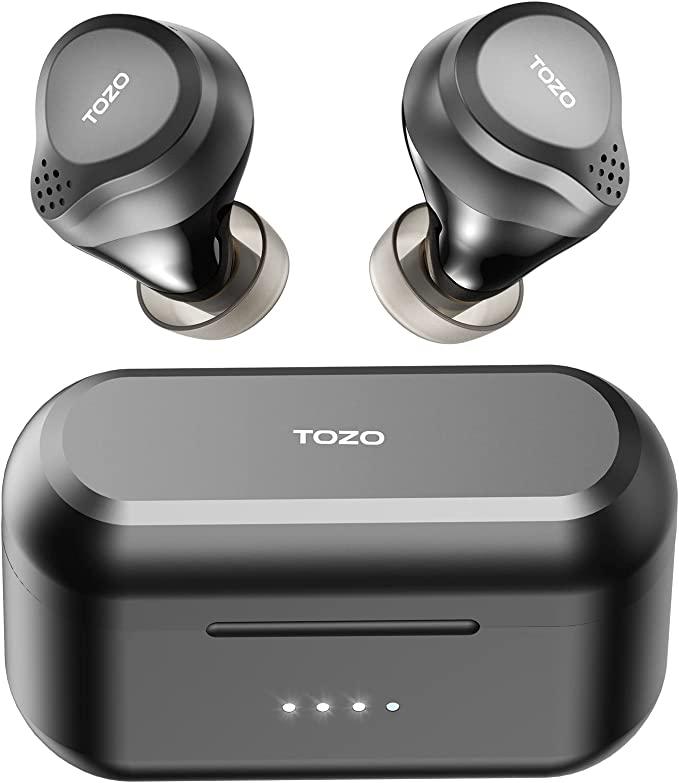Pamu S18 Wireless Earbuds: Noise Cancelling, Waterproof, and Crystal-Clear Sound
Update on Feb. 19, 2025, 2:28 p.m.
Our modern world is a cacophony of sounds. From the relentless hum of traffic to the incessant chatter of crowds, we are constantly bombarded with auditory stimuli. While some sounds are pleasant and even necessary, much of what we hear is simply noise – unwanted, intrusive, and often disruptive. This constant barrage of noise isn’t just annoying; it can have a significant impact on our health and well-being. It’s no wonder, then, that we often seek moments of quiet, a refuge from the auditory onslaught. This desire for tranquility has driven innovation in audio technology, leading to the development of sophisticated noise-canceling headphones like the Pamu S18.

Sound Waves 101: A Crash Course in Acoustics
Before we dive into the technology that silences the world around us, let’s take a moment to understand the fundamental nature of sound itself. Sound, in its essence, is vibration. When an object vibrates – whether it’s a guitar string, a vocal cord, or a loudspeaker – it creates pressure waves in the surrounding medium, usually air. These waves travel outward from the source, carrying energy with them.
These pressure waves have two key characteristics: frequency and amplitude. Frequency refers to the number of wave cycles that occur per second, measured in Hertz (Hz). A higher frequency corresponds to a higher-pitched sound, while a lower frequency corresponds to a lower-pitched sound. Amplitude, on the other hand, refers to the intensity or strength of the wave, which we perceive as loudness. It’s often measured in decibels (dB).

The Amazing Human Ear: How We Perceive Sound
Our ears are remarkable biological instruments designed to capture these sound waves and translate them into electrical signals that our brains can interpret. The process begins with the outer ear, which funnels sound waves into the ear canal. These waves then cause the eardrum (tympanic membrane) to vibrate.
These vibrations are amplified by three tiny bones in the middle ear – the malleus, incus, and stapes (also known as the hammer, anvil, and stirrup). The stapes, the smallest bone in the human body, transmits these vibrations to the inner ear, specifically to a fluid-filled, snail-shaped structure called the cochlea.
Inside the cochlea, thousands of tiny hair cells are arranged along a membrane called the basilar membrane. Different locations along the basilar membrane are sensitive to different frequencies of sound. When the fluid in the cochlea vibrates, these hair cells are stimulated, generating electrical signals that travel along the auditory nerve to the brain. Our brain then interprets these signals as sound, allowing us to perceive the richness and complexity of the auditory world.
The Unseen Enemy: The Impact of Noise on Our Health
While our ears are incredibly adept at processing sound, they are also vulnerable to damage from excessive noise exposure. Prolonged exposure to loud noises can damage the delicate hair cells in the cochlea, leading to hearing loss. This damage is often irreversible, and the resulting hearing loss can significantly impact quality of life.
But the effects of noise extend beyond hearing loss. Noise pollution has been linked to a range of other health problems, including:
- Stress and Anxiety: Noise can trigger the release of stress hormones, leading to increased heart rate, blood pressure, and anxiety levels.
- Sleep Disturbances: Noise can interfere with sleep, making it difficult to fall asleep and stay asleep.
- Cardiovascular Problems: Studies have shown a correlation between chronic noise exposure and an increased risk of heart disease.
- Cognitive Impairment: Noise can impair cognitive function, making it difficult to concentrate and perform tasks that require focus.
Fighting Fire with Fire: The Principle of Active Noise Cancellation
Given the detrimental effects of noise, it’s no surprise that we’ve sought ways to mitigate its impact. One of the most effective methods for reducing unwanted sound is active noise cancellation (ANC). The principle behind ANC is surprisingly simple, yet remarkably effective: it involves creating “anti-noise” to cancel out the unwanted sound.
Imagine a wave in the ocean. If you could create an identical wave, but with its peaks and troughs reversed (i.e., 180 degrees out of phase), and send it towards the original wave, the two waves would interfere with each other. The peaks of one wave would align with the troughs of the other, and vice-versa, resulting in a cancellation effect. This is essentially what ANC does with sound waves.
Inside the Earbuds: How ANC Technology Works
An ANC system in earbuds like the Pamu S18 typically consists of three main components:
- Microphones: Tiny microphones, often placed both inside and outside the earbud, are used to capture the ambient noise.
- Digital Signal Processor (DSP): This is the “brain” of the ANC system. The DSP analyzes the noise captured by the microphones and generates an “anti-noise” signal – a sound wave that is precisely the opposite of the incoming noise.
- Speaker: The earbud’s speaker then emits this anti-noise signal. When the anti-noise wave combines with the original noise wave, they cancel each other out, significantly reducing the amount of noise that reaches the listener’s ear.
Different Flavors of ANC: Feedforward, Feedback, and Hybrid
There are three main types of ANC systems:
- Feedforward ANC: This type of system uses microphones placed outside the earbud to capture the ambient noise. The DSP then processes this noise and generates the anti-noise signal before the sound reaches the ear. Feedforward ANC is generally effective at canceling out constant, predictable noises, such as the drone of an airplane engine.
- Feedback ANC: This type of system uses microphones placed inside the earbud, near the speaker. These microphones monitor the sound that actually reaches the ear, allowing the DSP to adjust the anti-noise signal in real-time. Feedback ANC is generally better at canceling out unpredictable noises, such as speech or sudden sounds.
- Hybrid ANC: This type of system combines both feedforward and feedback ANC, using microphones both inside and outside the earbud. Hybrid ANC offers the most comprehensive noise cancellation, effectively reducing a wider range of frequencies and noise types. The specific type used in the Pamu S18 is unconfirmed, but many modern earbuds utilize hybrid systems.
From Telegraph to Today: A Brief History of Headphones
The quest for personal audio experiences has a surprisingly long history. The earliest ancestors of headphones were developed in the late 19th century, not for music listening, but for telephone and radio operators. These early devices were often bulky and uncomfortable, far from the sleek earbuds we use today.
In 1910, Nathaniel Baldwin invented the first headphones that more closely resemble modern designs, initially selling them to the US Navy. The demand for improved audio fidelity grew throughout the 20th century, with advancements in speaker technology and materials leading to smaller, lighter, and better-sounding headphones.
Breaking Free: The Wireless Revolution and Bluetooth Technology
The development of wireless technology marked a major turning point in the evolution of headphones. The need for bulky, restricting cables was eliminated, providing users with unprecedented freedom of movement. Bluetooth, a short-range wireless communication standard, became the dominant technology for wireless audio.
Bluetooth, named after a 10th-century Danish king, Harald Bluetooth, was developed in the late 1990s by a consortium of technology companies, originally spearheaded by Ericsson. The goal was to create a standardized way for devices to communicate wirelessly over short distances, replacing cables for various applications.
Bluetooth Basics: Protocols, Profiles, and Codecs
Bluetooth operates in the 2.4 GHz frequency band, using a technique called frequency-hopping spread spectrum to minimize interference. It establishes a connection between two devices through a process called pairing.
Bluetooth uses various protocols and profiles to define how devices communicate and what types of data they can exchange. For audio streaming, the most relevant profile is A2DP (Advanced Audio Distribution Profile).
A crucial aspect of Bluetooth audio is the codec used. A codec is an algorithm that encodes and decodes digital audio data. Different codecs offer varying levels of compression and sound quality. Some common Bluetooth audio codecs include:
- SBC (Subband Coding): This is the mandatory, default codec for Bluetooth A2DP. It offers decent sound quality but is known for relatively high latency and some loss of audio detail due to compression.
- AAC (Advanced Audio Coding): This codec is widely used by Apple devices and offers better sound quality than SBC at similar bitrates.
- aptX (various versions): Developed by Qualcomm, aptX codecs aim to provide higher fidelity audio with lower latency than SBC.
The specific Bluetooth version and codecs supported by the Pamu S18 are unverified, but most modern earbuds utilize Bluetooth 5.0 or later, which offers improved range, speed, and power efficiency.

The Pamu S18: A Case Study in Wireless Audio
The Pamu S18 are in-ear headphones, which can create a snug fit.
The Pamu S18 incorporates the principles of ANC and Bluetooth technology, as previously disscussed.
Bits and Bytes: Understanding Digital Audio
To understand how Bluetooth transmits audio, it’s helpful to grasp the basics of digital audio. Unlike analog audio, which represents sound as a continuous wave, digital audio represents sound as a series of discrete samples.
Two key parameters define the quality of digital audio:
- Sampling Rate: This refers to the number of times per second that the analog audio signal is sampled. A higher sampling rate captures more detail and allows for the representation of higher frequencies. Common sampling rates include 44.1 kHz (CD quality) and 48 kHz.
- Bit Depth: This refers to the number of bits used to represent each sample. A higher bit depth provides a wider dynamic range and reduces quantization noise. Common bit depths include 16-bit and 24-bit.
The digital audio data is then processed by a Digital-to-Analog Converter (DAC) in the receiving device (e.g., the earbuds) to convert it back into an analog signal that can be played through the speaker.

The Future of Sound: What’s Next for Wireless Audio?
The evolution of wireless audio is far from over. Several exciting trends are shaping the future of listening experiences:
- Lossless Audio: There’s a growing demand for lossless audio codecs that preserve all the detail of the original recording, without any compression.
- Personalized Sound Profiles: Future earbuds may be able to tailor the audio output to individual hearing characteristics, creating a truly customized listening experience.
- Spatial Audio: This technology creates a more immersive, three-dimensional soundstage, making it feel like sound is coming from all around you.
- AI-Powered Audio Enhancement: Artificial intelligence is being used to improve noise cancellation, enhance voice clarity, and even automatically adjust the sound based on the listening environment.
- Longer Battery Life and Faster Charging: While specific battery specs for the Pamu S18 are unavailable, the trend across the industry is towards increased battery life and faster charging technologies, using smaller and more energy-dense batteries. This addresses a major user concern with wireless earbuds. Wireless charging is also becoming increasingly common.
- Integration with Smart Assistants: Seamless integration with voice assistants like Siri and Google Assistant is becoming a standard feature, allowing users to control playback, make calls, and access information hands-free.
- Biometric Sensors: Some earbuds are beginning to incorporate biometric sensors, such as heart rate monitors, to track fitness data.
- Improved Durability. Earbuds are becoming increasingly resilient to sweat, water, and general wear.
Conclusion: The Power of Understanding the Technology
The Pamu S18, while we can’t definitively comment on all of its specifications, represents a point along the continuing evolution of wireless audio. By understanding the basic principles of sound, active noise cancellation, and Bluetooth technology, we can better appreciate the complex engineering that goes into creating these seemingly simple devices. This knowledge also empowers us to make more informed choices as consumers, selecting products that best meet our individual needs and preferences. It’s not just about buying a product; it’s about understanding the science that makes it possible. The seemingly magical ability to silence the world around us, or to enjoy music without the constraints of wires, is a testament to human ingenuity and our ongoing quest to improve our auditory experiences. The continuous exploration in the realm of physics and electrical engineering opens doors to constant enhancements in the realm of personal audio.
